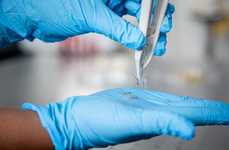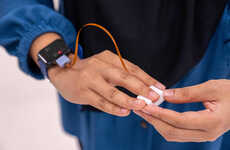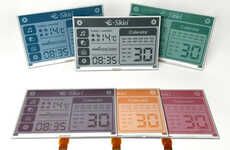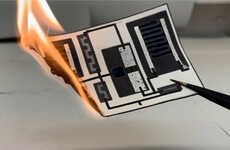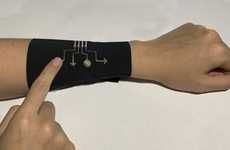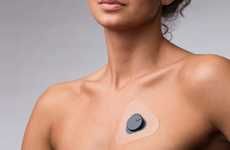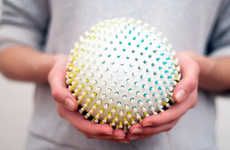
A Team of Researchers Created an Artificial Skin from Household Items
Laura McQuarrie — February 23, 2016 — Tech
References: spectrum.ieee.org
A research team from Saudi Arabia's King Abdullah University of Science and Technology (KAUST) created a "paper skin" that's able to mimic some of the complex sensory functions that human skin can perform.
Amazingly enough, the Saudi Arabian research team was able to assemble the paper skin using only a handful of common household objects like aluminum foil, sticky notes, sponges and napkins. In total, the unit would cost under $2 to assemble. On the topic of cost, Muhammad Mustafa, an electrical engineer KAUST notes: "Its impact is beyond low cost: simplicity. My vision is to make electronics simple to understand and easy to assemble so that ordinary people can participate in innovation.”
The technology behind this artificial paper skin has the potential to greatly enhance a number of devices, including wearables, touchscreen devices, prosthetics and robots of the future.
Amazingly enough, the Saudi Arabian research team was able to assemble the paper skin using only a handful of common household objects like aluminum foil, sticky notes, sponges and napkins. In total, the unit would cost under $2 to assemble. On the topic of cost, Muhammad Mustafa, an electrical engineer KAUST notes: "Its impact is beyond low cost: simplicity. My vision is to make electronics simple to understand and easy to assemble so that ordinary people can participate in innovation.”
The technology behind this artificial paper skin has the potential to greatly enhance a number of devices, including wearables, touchscreen devices, prosthetics and robots of the future.
Trend Themes
1. Artificial Skin - The creation of artificial skin using common household objects presents disruptive innovation opportunities in fields such as robotics and prosthetics.
2. Sensory Function Mimicry - The ability to mimic complex sensory functions of human skin using inexpensive materials opens up disruptive innovation opportunities in wearables and touchscreen devices.
3. Low-cost Electronics - The concept of assembling electronics using low-cost, easily accessible materials has potential for disruptive innovation in the field of consumer electronics and innovation participation by ordinary people.
Industry Implications
1. Robotics - The development of artificial skin can revolutionize the field of robotics by allowing robots to have a sense of touch and improve their interaction with the environment.
2. Prosthetics - Inexpensive artificial skin could lead to disruptive innovation in prosthetics, making them more affordable and capable of simulating the sense of touch for amputees.
3. Wearable Technology - The ability to mimic sensory functions of human skin could disrupt the wearable technology industry, enabling more immersive and interactive experiences for users.
2.2
Score
Popularity
Activity
Freshness


